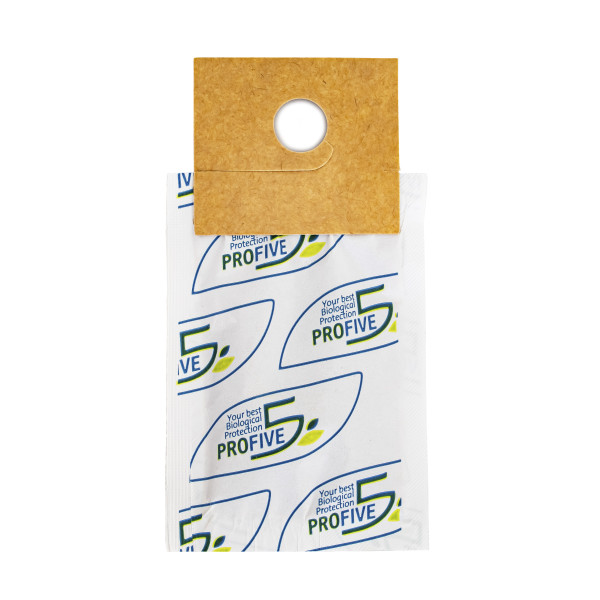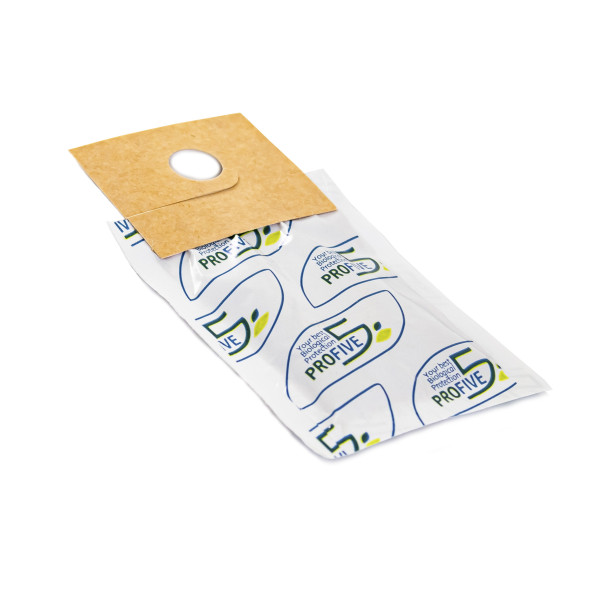What is SWIR PRO5?
Amblyseius swirskii is a predatory mite from the family Phytoseiidae, measuring approximately 0.5 mm in length, widely used in agriculture as a biological control agent for thrips and whiteflies. This species is one of the most commonly encountered entomophages used in biological pest control. Amblyseius swirskii exhibits a high reproductive capacity and can survive for some time without prey, feeding on pollen, making it an extremely effective tool for plant protection. Additionally, it does not cause damage to plants and has no negative impact on the environment, making it safer than the use of chemical insecticides.
Life cycle.
The life cycle of Amblyseius swirskii consists of the following stages: egg, larva, nymph, and adult. The female typically lays eggs (with a diameter of about 0.2 mm) on the lower side of leaves, where they are visible to the naked eye. After a few days, larvae hatch from the eggs and prey on small insects such as thrips larvae and whiteflies. After several molts, the larvae transform into nymphs, which continue actively hunting pests. The nymphs then develop into adult individuals, which also feed on pests and reproduce. The entire life cycle of the predatory mite depends on temperature and humidity levels and lasts an average of 14 to 21 days.
Pests.
Amblyseius swirskii feeds on various pests, including thrips, whiteflies, spider mites, and other small insects, but it prefers the first two. Therefore, it is used for controlling greenhouse whitefly (Trialeurodes vaporariorum), tobacco whitefly (Bemisia tabaci), western flower thrips (Frankliniella occidentalis), onion thrips (Thrips tabaci), and others. In the absence of prey, the entomophage is able to sustain its population by feeding on plant pollen. Hence, it is highly promising in pollen-rich crops. The high effectiveness of Amblyseius swirskii in controlling these pests has been proven through years of practical application.
Crops.
Amblyseius swirskii is used in a wide range of crops, including:
• Vegetable crops: cucumber, pepper, eggplant, zucchini, etc.
• Fruit crops: strawberry, raspberry, blackberry, blueberry, etc.
• Flower and ornamental crops: rose, chrysanthemum, gerbera, poinsettia, calla lily, anthurium, etc.
It is not recommended to use Amblyseius swirskii on tomato crops. This is because this species is a surface predator, and its effectiveness relies on the availability of pests for hunting and feeding. It has difficulty moving and pursuing prey on densely hairy plants like tomatoes. In such cases, other methods of biological pest control are recommended.
Benefits.
As the sachets contain larvae, nymphs, and eggs of the predator, the emergence of the predator from the sachet will occur within 4 weeks, ensuring prolonged protection of the crop.
Application.
It is recommended to introduce the mites at an early stage of plant growth to allow them to effectively control pests throughout the season. Sachets are evenly distributed throughout the crop. To obtain precise application rates for your crop, please contact our managers.
Storage.
Storage of Amblyseius swirskii should follow specific guidelines to ensure maximum effectiveness of biological control. Here are a few recommendations:
• The product should be stored in a horizontal position in a cool place protected from direct sunlight, at a temperature of 12-14°C.
• Storing Amblyseius swirskii in a refrigerator or freezer is prohibited as it may lead to the death of the entomophages.
• The maximum storage period for the product from the time of receipt is 1-2 days.
• It is important to remember to avoid contact with pesticides during the storage of Amblyseius swirskii.
There are no reviews for this product, be the first to leave your review.


